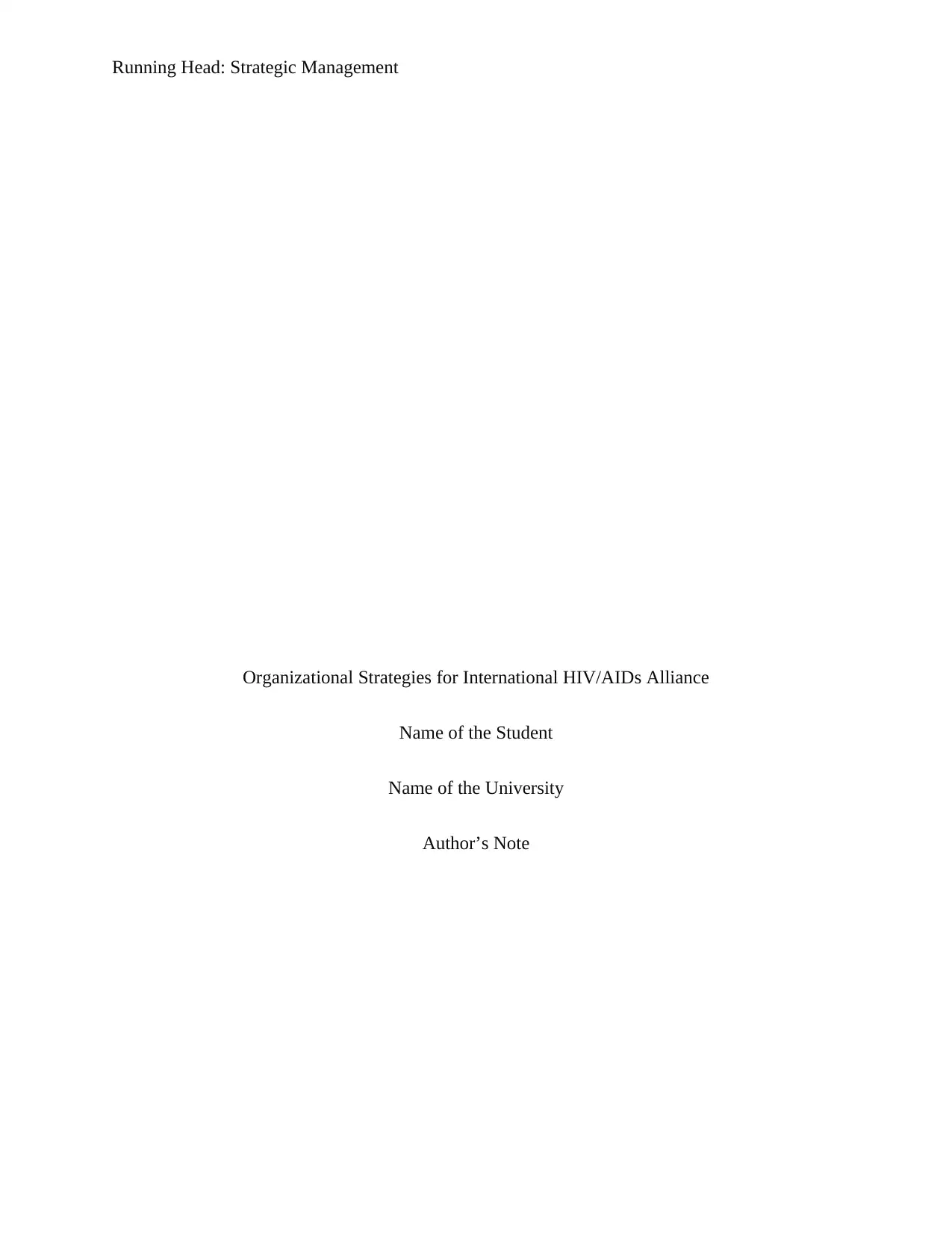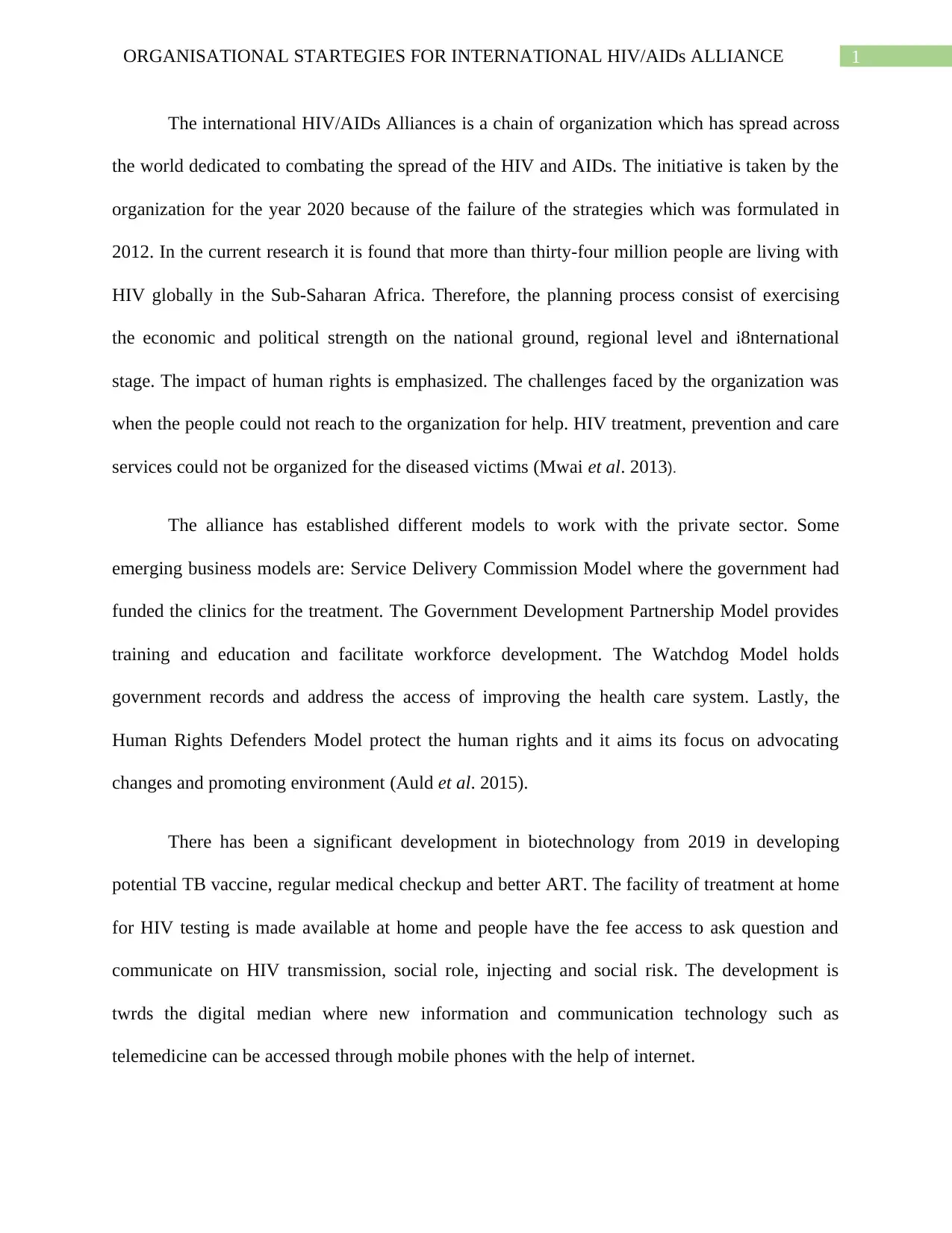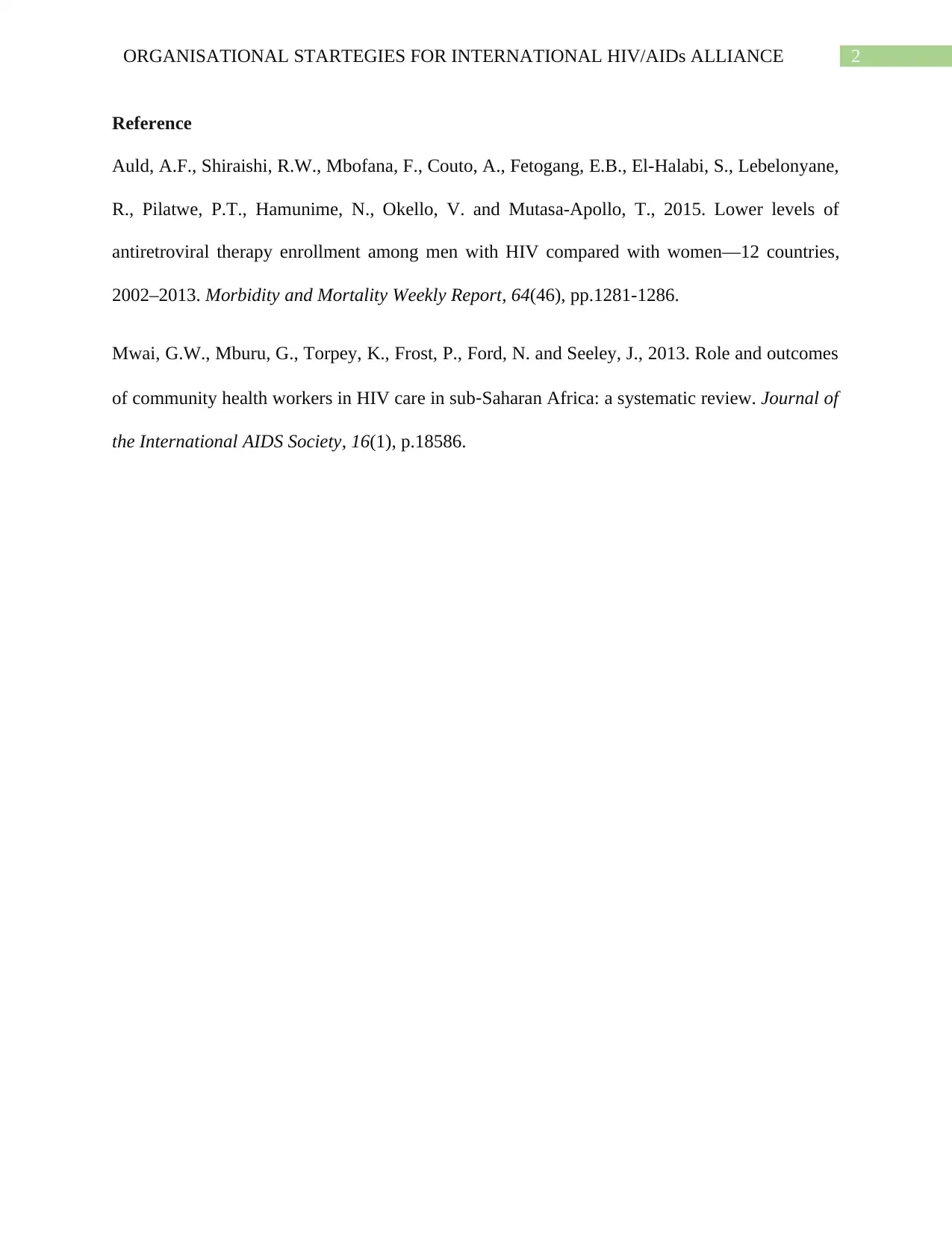University Case Study: International HIV/AIDS Alliance Strategies
VerifiedAdded on 2022/11/25
|3
|502
|222
Case Study
AI Summary
This case study examines the International HIV/AIDS Alliance, a global network dedicated to combating HIV/AIDS. The analysis focuses on the challenges the Alliance faced in 2012 while developing its strategy for 2020. The case highlights the context of the HIV/AIDS epidemic, particularly in Sub-Saharan Africa, and the critical need for effective interventions. The Alliance's strategic planning process involved leveraging economic and political strengths at various levels and emphasizing human rights. Key challenges included reaching affected populations and providing treatment and care. The Alliance employed several business models, including Service Delivery Commission, Government Development Partnership, Watchdog, and Human Rights Defenders models. The analysis also discusses advancements in biotechnology, telemedicine, and digital communication, highlighting how these innovations can improve HIV prevention, treatment, and care. The case provides insights into strategic decision-making, leadership, and organizational responses to global health crises.
1 out of 3








![[object Object]](/_next/static/media/star-bottom.7253800d.svg)